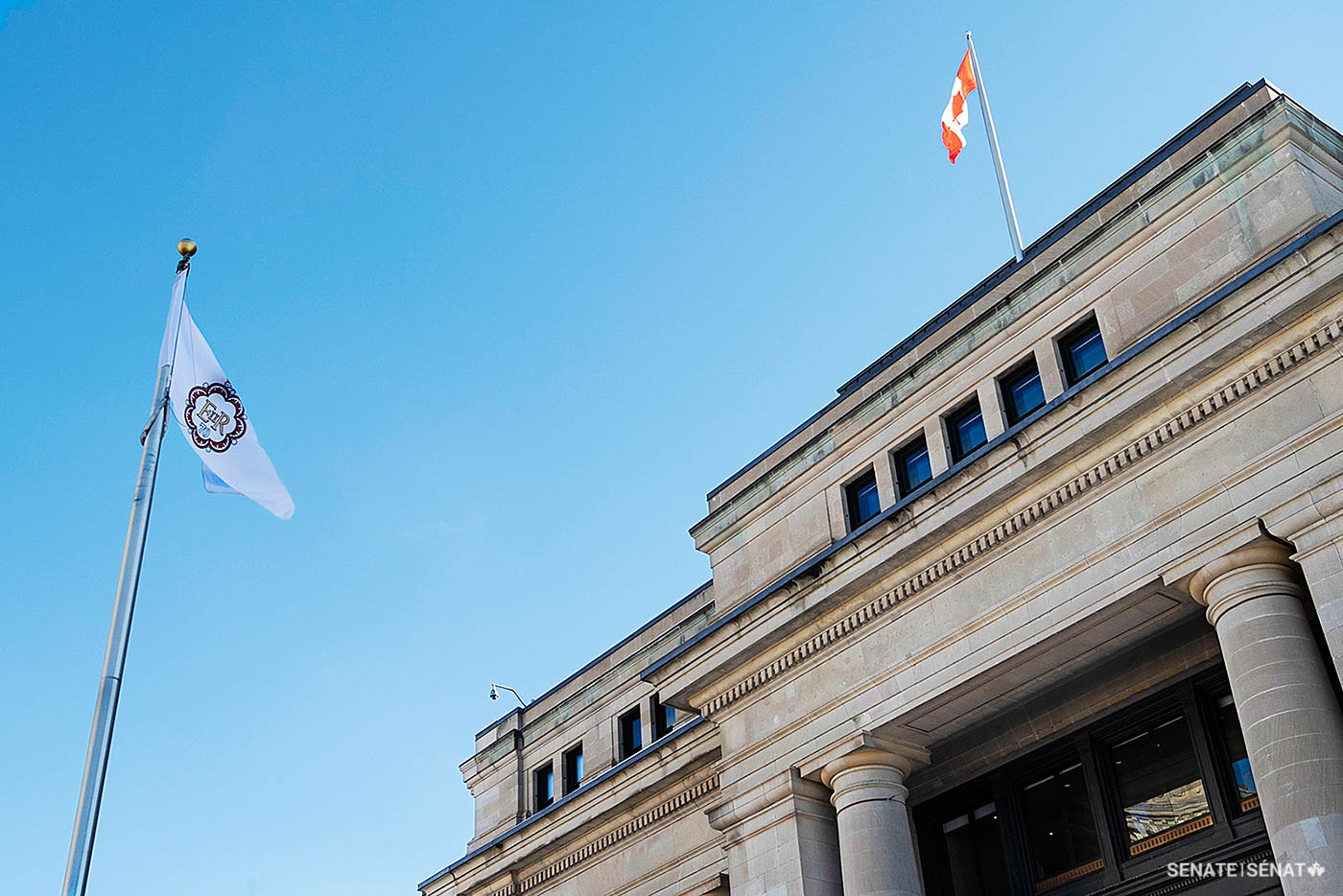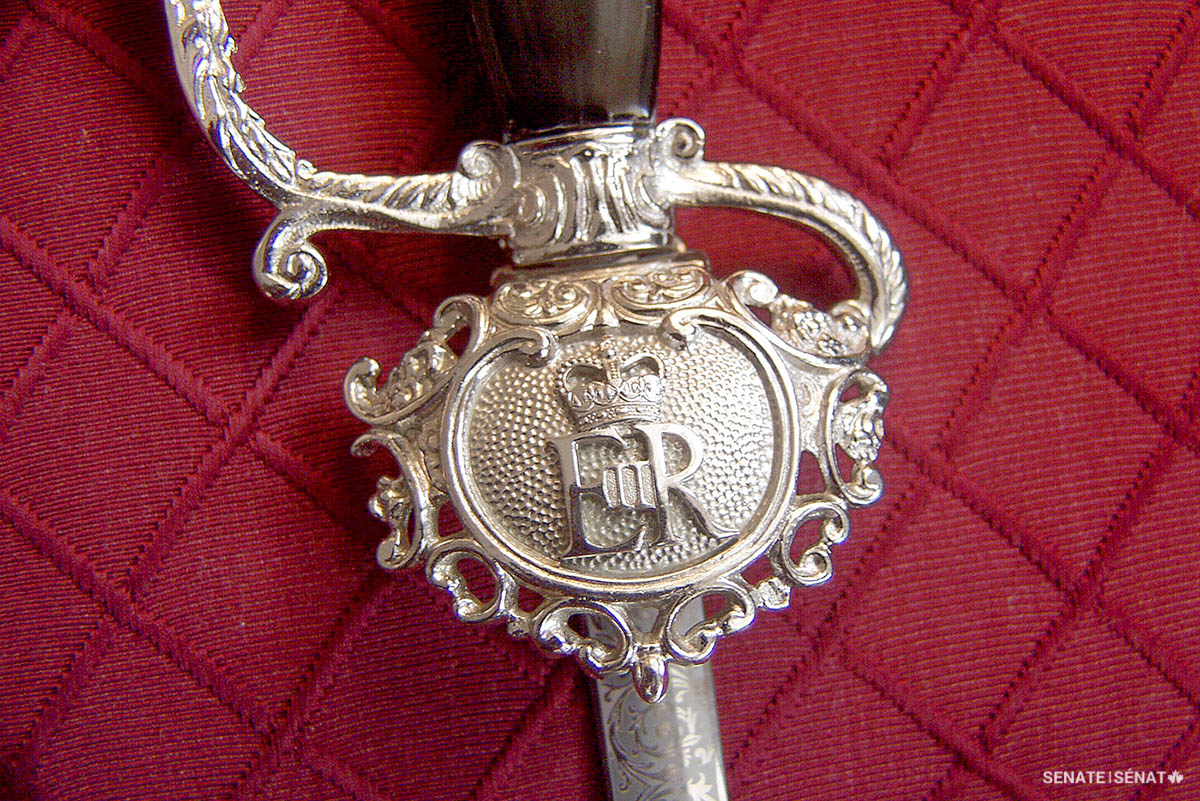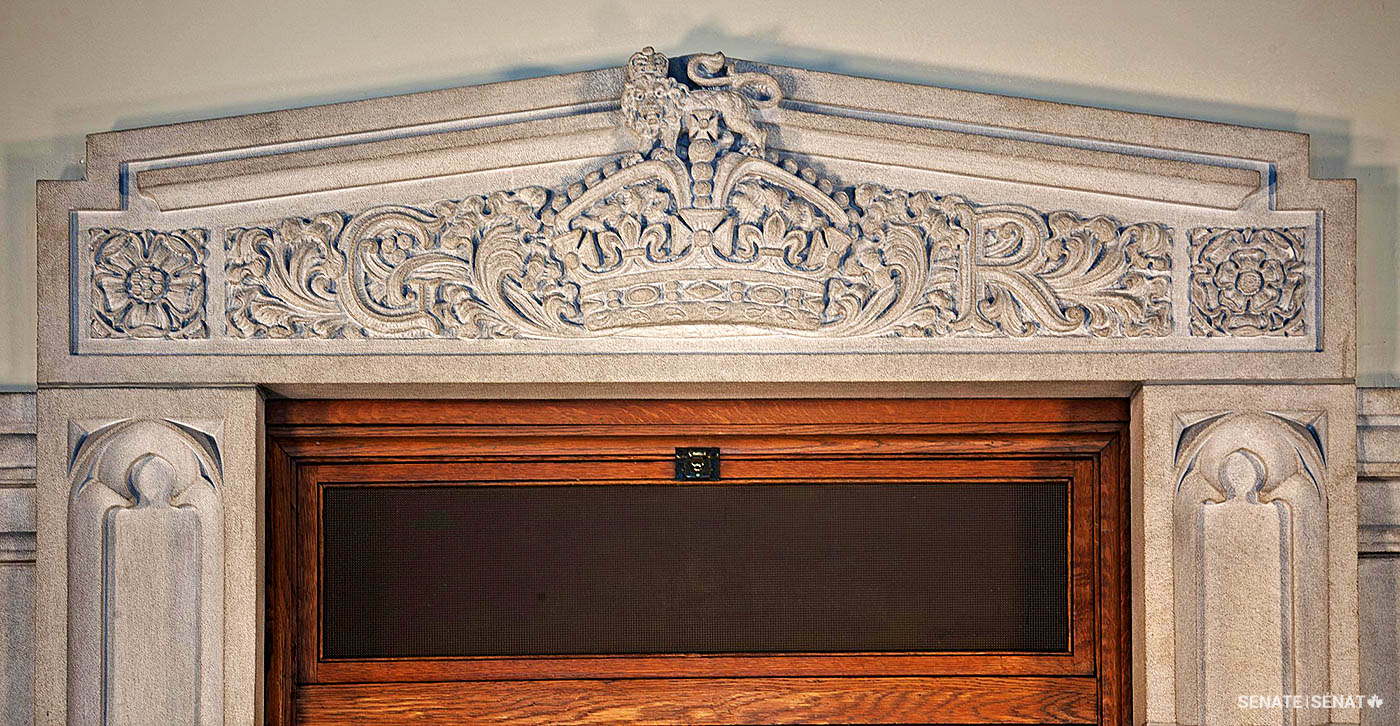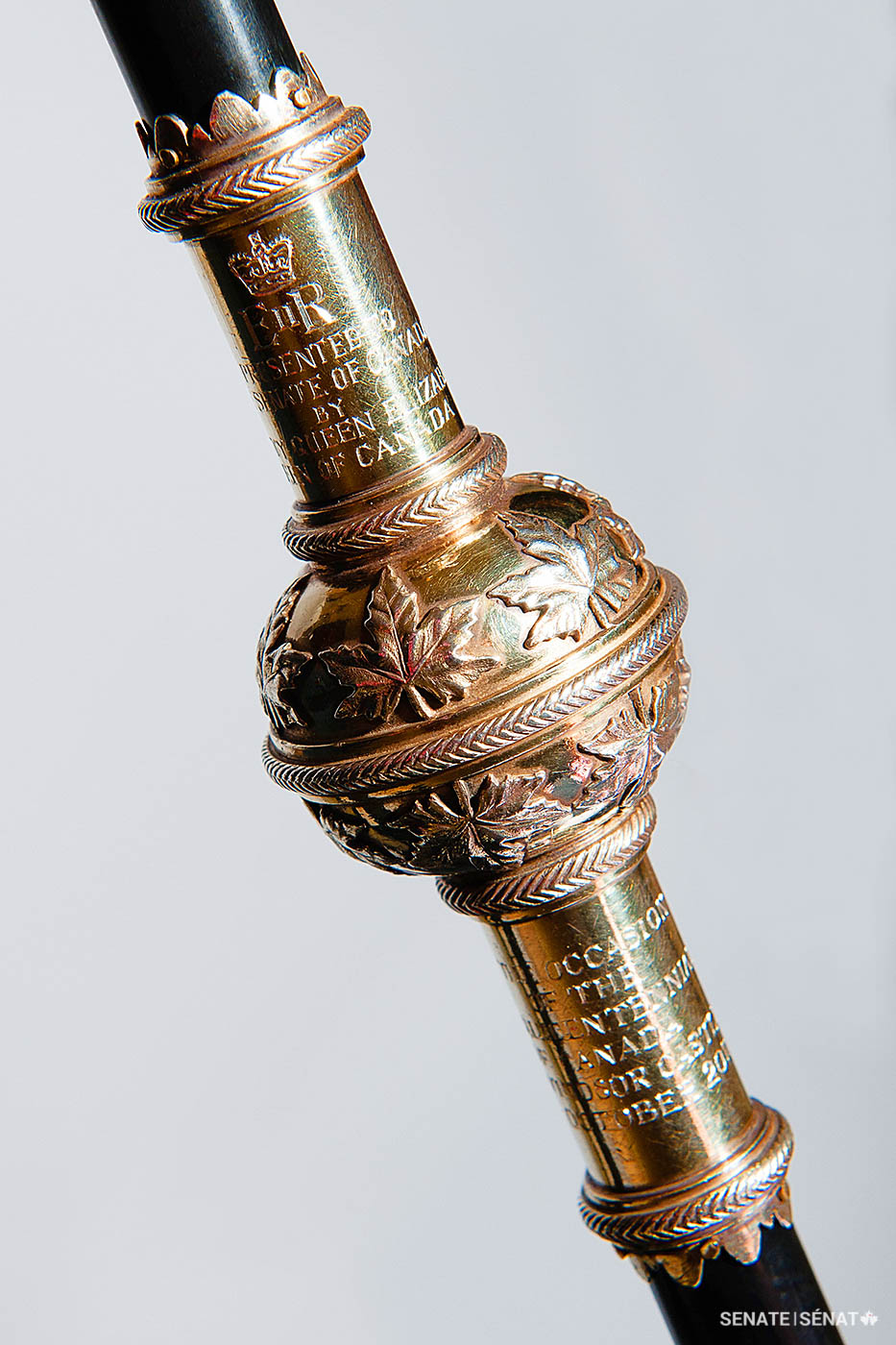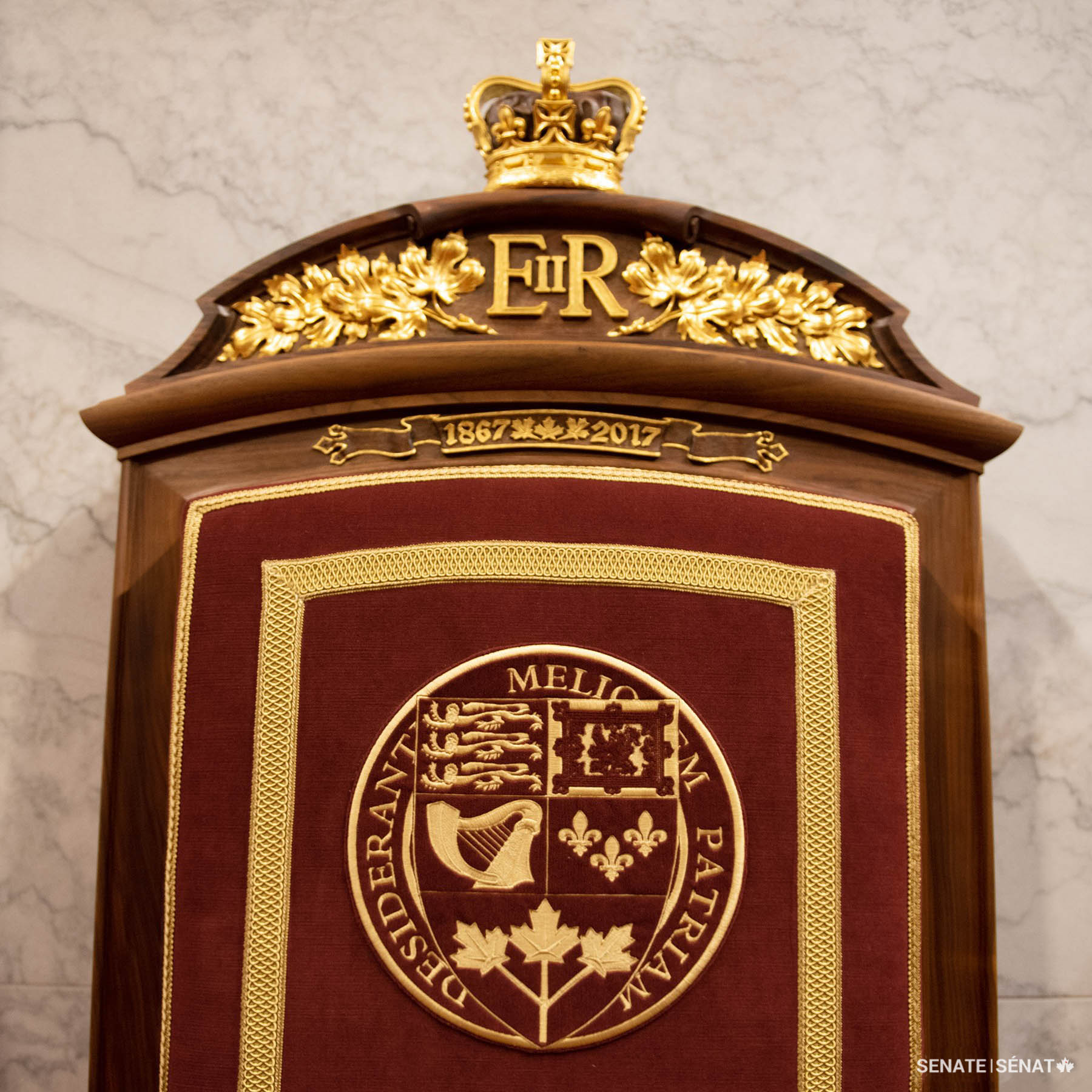Deciphering the Queen’s cypher

In February 2019, the Senate moved to the Senate of Canada Building, a former train station built in 1912. The Senate will occupy this temporary location while Parliament’s Centre Block — the Senate’s permanent home — is rehabilitated.
Although Centre Block is shuttered for rehabilitation work, Canadians can still experience its art and architecture through the Senate’s immersive virtual tour.


Queen Elizabeth II’s personal emblem, the royal cypher, is front and centre in 2022 as Commonwealth nations celebrate the Queen’s Platinum Jubilee, marking her 70 years on the throne.
The Canadian Platinum Jubilee emblem — designed around the royal cypher — is being flown on the Senate of Canada Building’s ceremonial flagpole and at Rideau Hall, the governor general’s residence.
It also lines Confederation Boulevard, the ceremonial route that links downtown Ottawa and Gatineau, Quebec.
Usher of the Black Rod J. Greg Peters — Parliament’s senior protocol officer as well as messenger and personal attendant to the Queen in Parliament — says the cypher is a potent visual reminder of the long-standing ties between Canada and the Crown.
“Like other royal symbols, it galvanizes that connection,” he said. “It nourishes the link between Crown and Parliament.”
An enduring Tudor tradition
Royal cyphers have been in use for centuries, traditionally combining the reigning monarch’s initials and title — either as standalone letters or intricately entwined in the form of a monogram.
The Queen’s cypher follows a template that originated 500 years ago in Tudor England. Henry VIII had his royal cypher displayed on his many mansions and palaces, adding the ‘R’ to denote ‘Rex’ — Latin for ‘King.’
In Queen Elizabeth’s case, the characters ‘E II R’ stand for ‘Elizabeth II Regina,’ where ‘Regina’ is Latin for ‘Queen.’
Her design is surmounted by St. Edward’s Crown, a symbol of the monarch as the embodiment of the state.
Cypher spotting in the Parliamentary Precinct
Royal cyphers appear all over the Parliamentary Precinct. The Senate Speaker’s suite, at the east end of Centre Block, features cyphers carved in the lintels above doorways.
Those of King George V — King of Canada when this suite was completed in the 1920s — and his consort, Queen Mary of Teck, appear in adjacent rooms.
The Diamond Jubilee window above Centre Block’s Senate entrance depicts Queen Elizabeth II and her great-great-grandmother, Queen Victoria. Their Diamond Jubilees — marking 60 years on the throne — were celebrated in 2012 and 1897.
As both Queen and Empress, Queen Victoria’s cypher consists of the letters ‘VRI’, ‘Victoria Regina Imperatrix’ — ‘Imperatrix’ is Latin for ‘Empress’.
The cypher figures prominently in the Senate of Canada Building, the Senate’s temporary home. At the east end of the Chamber, the headpiece on the monarch’s throne — designed in 2018 and carved in English walnut from the royal estate at Windsor Castle — displays the Queen’s cypher, surrounded by a spray of maple leaves.
The cypher is also a fixture on parliamentary regalia.
The Usher of the Black Rod’s staff of office displays the cypher of King George V at its upper end and, halfway down, Queen Elizabeth’s.
“When the Black Rod was restored in 2016, we realized there was space to have the royal engraver add a dedication that included the Queen’s royal cypher,” Mr. Peters said.
“We seized the opportunity — it’s so important to constantly renew these connections between Parliament and the Crown.”
